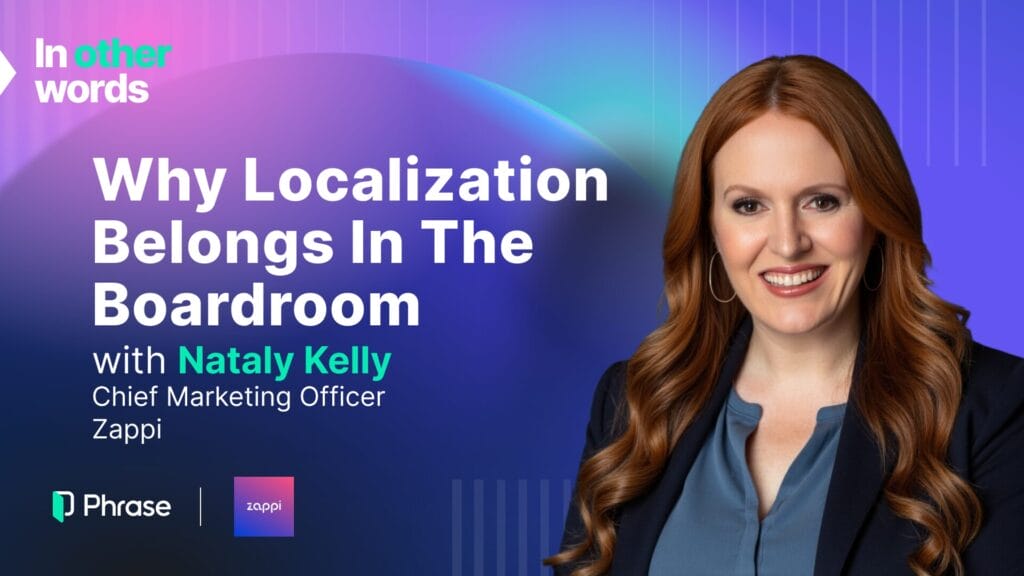With expansion into new international markets key for many online retailers’ growth strategies, translation and localization becomes a key success factor.
Translation may previously have been seen as an obstacle to expansion, one that required time and resources, slowing down the rate of growth.
With the development of AI-driven automated translation and localization, those obstacles of cost and time have been removed, and translation becomes a powerful growth strategy.
This is a theme we explore in our latest ebook, ‘Maximizing Global Ecommerce Sales: How language creates a strategic advantage‘, which looks at best practices for translation and localization.
Here, we’ve gathered some of the key themes from the report:
Language is essential to maximize sales in new markets
While 67% of shoppers have made an online purchase from a website based in a foreign country, language is a huge potential barrier.
While determined customers may be able to use their language skills to buy from cross-border sites, the experience isn’t ideal, and many elements of the site may be hard to understand.
Just 28% would make a purchase from a website in a foreign language, which means retailers are missing out on new markets if they fail to address translation and localization.
Translation also enables retailers to market more effectively in overseas markets, providing email and social content in the customer’s native language, and personalizing content more effectively.
Machine translation speeds up time to market
For companies looking to expand into new markets, speed and efficiency is key for maximizing value.
With machine translation and its ability to process large volumes of text rapidly, retailers can speed up expansion into new markets. Once established, this rapid turnaround is crucial for maintaining up-to-date product listings, descriptions, and customer communications.
The benefits of machine translation can be measured in a number of ways, including increased sales from faster site launches, reduction in time spent on projects by developers, designers, and localization teams, as well as better sales performance driven by accurate translation.
Phrase client Deliveroo was able to benefit from machine translation when it expanded into several new markets.
With more than 170,000 delivery partners, the right technology and processes were needed to handle large numbers of translation requests.

Using the Phrase Localization Platform, Deliveroo was able to achieve a three to four day reduction in project timelines, while providing a more tailored and personalized user experience for customers across different regions.
As Cristina Marín, Senior Localization Manager at Deliveroo explains:
By using the Phrase Localization Platform, localization managers are saving at least 35-40% of the time typically spent on project management
– Cristina Marín, Senior Localization Manager, Deliveroo
Translation drives improved customer experiences
Customer experience is a key factor in a customer’s decision to shop with a certain brand. It’s about the ease with which they can browse and navigate a website, understand key product information, read user reviews and complete purchases without hassle.
It’s also about the post-purchase experience, including engagement with customer support, shipping, and the marketing content they receive from retailers.
Translation has a huge part to play in the customer experience as retailers expand. By adapting the customer experience, and ensuring that product pages and other site copy works equally well for new markets.
By providing a fully localized experience from initial engagement through to post-purchase support, customers can enjoy a seamless journey without encountering language barriers or cultural misunderstandings.
Increased conversions
Localized product descriptions, reviews, and calls-to-action are more persuasive and can drive higher conversion rates. According to a study by Shopify, translation increases retailers’ conversion rates by 13% on average.
Accurate translation means that customers make more informed purchases, and also reduces the risk of misunderstandings and errors in areas such as product descriptions, shipping and returns policies, and FAQs. This also reduces the likelihood of returns and complaints.
When we look at key areas such as checkout, translation and localization can directly impact sales. Accurate translation ensures that customers see clear price and shipping information,, and reassures customers about payment security.
It’s also about the detail. For example, while many retailers use ‘add to basket’ on buttons, it doesn’t always translate well. In German, this would be ‘Zum Warenkorb hinzufügen’, which would be too long, so text needs to be adapted to design needs.

Addressing these translation issues is essential for creating a seamless and user-friendly checkout experience for international shoppers, and can have a direct impact on conversion rates.
Translation and localization go hand-in-hand
It isn’t enough just to translate content into a new language, it needs to be localized to be truly effective.
Translation is changing the language, but localization is about making content culturally relevant, so that it accounts for local expectations, practices, and behavior. It ensures that content, products and presentation is more relevant to a local audience.
By planning carefully, and understanding and accounting for cultural differences, retailers can avoid the kinds of translation mistakes made by retailers like IKEA and Amazon.
To read more about the role of translation in ecommerce and how it can drive customer experiences, as well as best practices for implementing translation and localization, download our new ebook:






